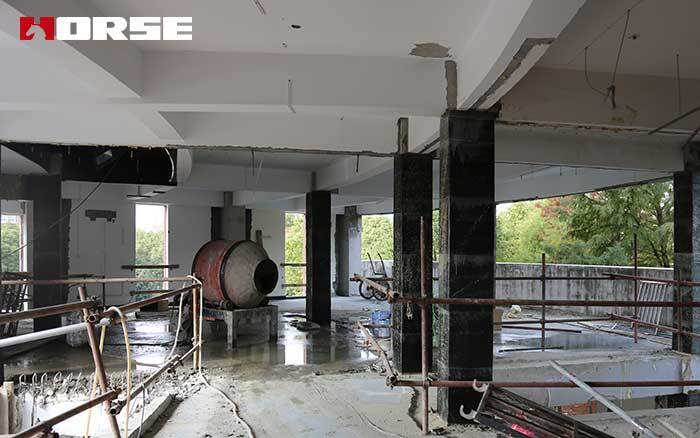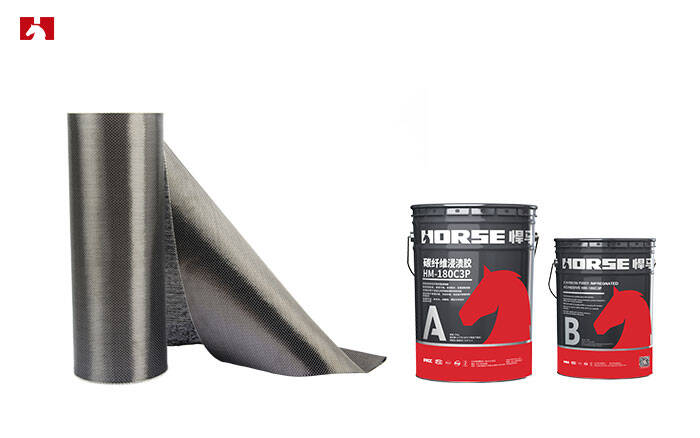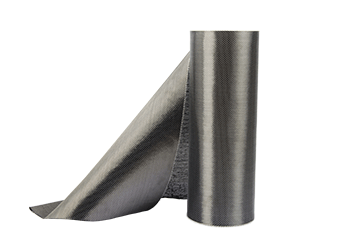Solutions
Horse Construction offers full range of structural strengthening materials with technical supports, documentation supports, products supports, project supports.
The Key Points Of Construction Technology Of CFRP Strengthening Reinforced Concrete Columns

CFRP strengthens the reinforced concrete column, which can change the concrete column from the longitudinal axial force state to the triaxial compressive force state. The load-bearing capacity and deformation capacity of the transversely restrained concrete have been significantly improved, and the effect of strengthening the reinforced concrete column whose axial compression ratio cannot meet the requirements of the seismic design code is obvious. Under the repeated action of the seismic load, the reinforced concrete column will first appear at the upper and lower ends of the plastic hinge area, and the bearing capacity and ductility will decline rapidly. After winding and strengthening with CFRP, the core concrete in the plastic hinge area is constrained, and the ultimate strength and deformation capacity of the bearing capacity are greatly improved. The construction technology is low, the process is simple, the effect is good, the corrosion resistance is strong, only need to strengthen the protection, no maintenance.

The Key Points Of Construction Technology Of CFRP Strengthening Reinforced Concrete Columns
1) CFRP-reinforced reinforced concrete columns are suitable for cylindrical or small-section rectangular columns (the side length of the section is generally less than 800mm). It is effective to use CFRP restraint method to improve the bearing capacity of small eccentric compression columns, but it is used under conditions of large eccentricity. The CFRP restraint method has a very small increase in the bearing capacity of the column, and the use of vertical and horizontal joint bonding of carbon fiber has a better effect on improving the bearing capacity of the column. The prerequisite for reinforcement is that the core concrete of the component has not been damaged and still has a certain bearing and deformation capacity.
2) Before sticking the carbon fiber cloth, the surface of the reinforcement column must be polished to remove surface impurities. The four corners of the column are polished into a smooth arc with a radius of not less than 20mm, and the surface of the column is cleaned and kept dry to ensure its bonding effect. Reasonably use leveling glue for leveling and filling. The primer and dipping glue must be applied evenly to avoid peeling damage to the interface. The next process should be carried out immediately after the surface of the primer and the smoothing glue are dry to the touch. After the surface of the concrete component is repaired and flattened, the CFRP cloth can be wrapped on the outside to increase its contact area, facilitate stress transfer and avoid stress concentration. The repair of the surface of the component is extremely important, and it will directly affect the effect of CFRP on the lateral restraint of concrete.
3) Unloading work before reinforcement of reinforced concrete columns is often overlooked. When the load is outsourcing CFRP for concrete components, the outsourcing CFRP has a strain lag relative to the surface of the concrete column. It often happens that the CFRP has not been broken and the concrete has been crushed. This effect reduces the reinforcement effect of CFRP and cannot fully exert the high-strength tensile properties of CFRP.
4) For small eccentric compression columns that need to be reinforced, adopt the method of transversely wrapping CFRP cloth at intervals for reinforcement design. The width of each cloth is 200mm, the package spacing is 50mm, the overlap is staggered, and the overlap length is 150mm, and it is evenly pasted along the height of the column. The transverse lap length of carbon fiber cloth must fully meet the design requirements to ensure that its bonding strength is fully utilized. For the large eccentric compression column that needs to be reinforced, in addition to wrapping the CFRP cloth horizontally according to the reinforcement method of the small eccentric compression column, a 300mm wide CFRP cloth corner is pasted along the column height and longitudinally on the four corners of the column. After the carbon fiber cloth is pasted, a layer of sticky dipping glue should be applied to the outer surface of the carbon fiber cloth.
5) The radius of the corner chamfer of the rectangular column shall not be less than 20mm, and the column side is best modified to be convex to reduce the concentrated stress of CFRP at the corner. Many tests have shown that even so, the damage of CFRP still occurs at the corner.
6) If the construction is in winter, the ambient temperature is lower than 5℃, and the drying speed of the glue is slow. During the construction process, some special measures can be taken to meet the requirements of the construction environment. The specific measures are as follows. Put the structural glue in hot water to heat up, and appropriately increase the amount of its B component within the allowable range during the glue preparation process to shorten the initial setting time of the glue. Use colored strips of cloth to seal the column and its surrounding work space to form a closed small space, heat it in it, and then start construction when the temperature and humidity reach the requirements of the construction regulations.
You can find anything here you are in need of, have a trust trying on these products, you will find the big difference after that.

High strength, unidirectional carbon fiber wrap pre-saturated to form a carbon fiber reinforced polymer (CFRP) wrap used to strengthen structural concrete elements.

High strength, unidirectional carbon fiber fabric pre-saturated to form a carbon fiber reinforced polymer (CFRP) fabric used to strengthen structural concrete elements.

High strength, unidirectional carbon fiber sheet pre-saturated to form a carbon fiber reinforced polymer (CFRP) sheet used to strengthen structural concrete elements.